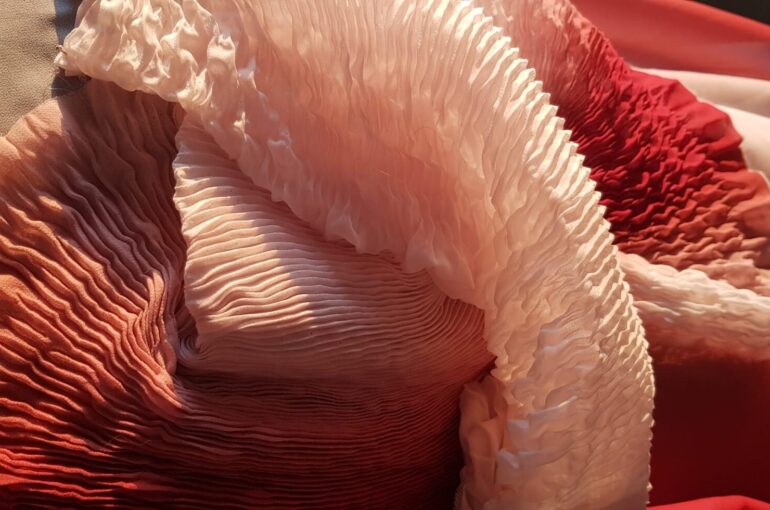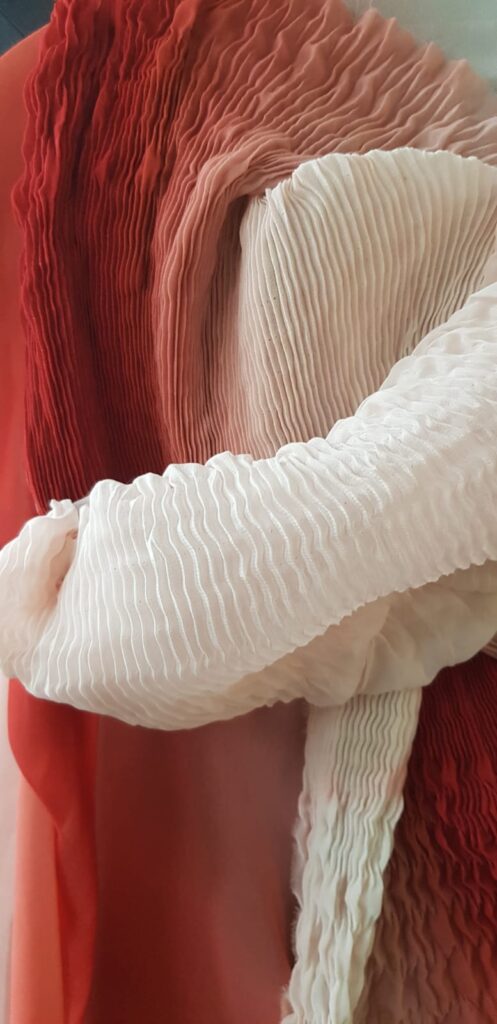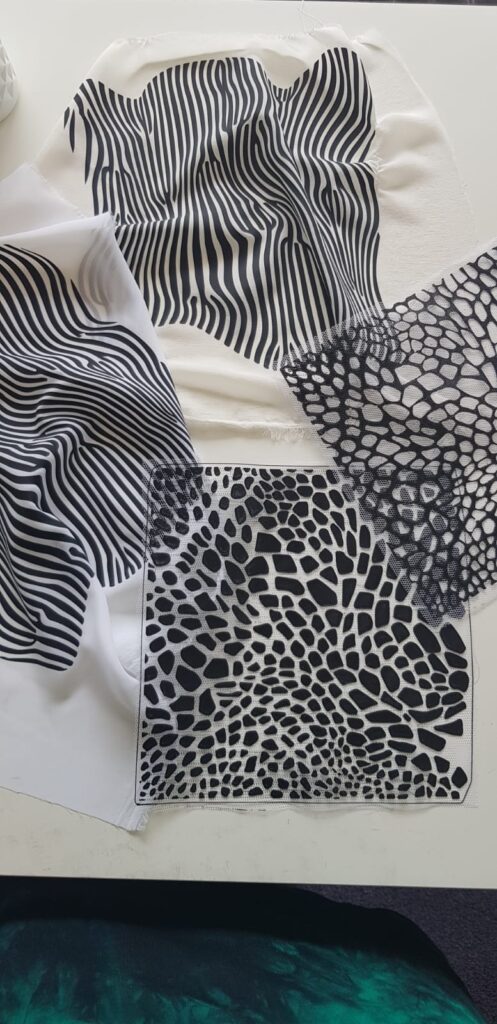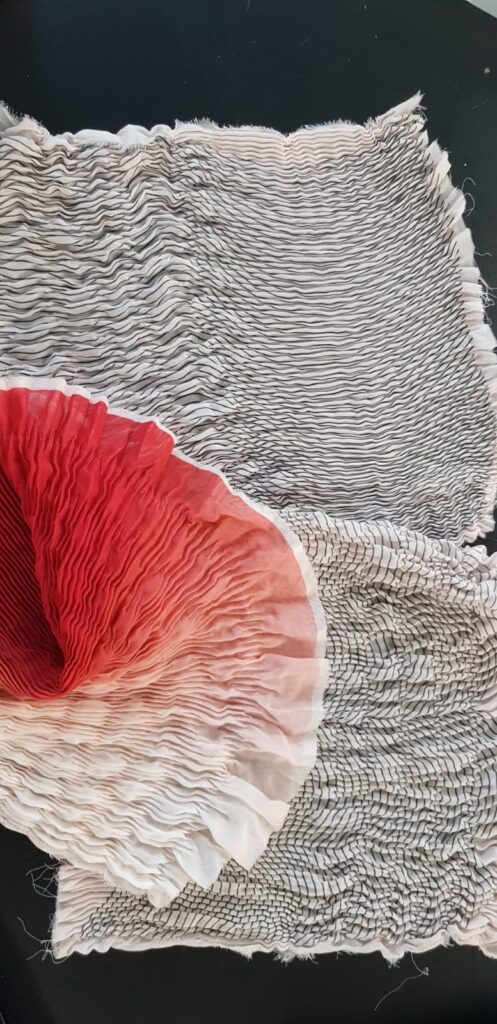Navigating the evolution of fashion tech

The evolution of fashion tech
For centuries high fashion in itself has been accepted for its aesthetic and expressive value. Now that we have started to fuse and cross-pollinate this field of expression with other industries, like technology, into something called “fashion tech”, this seems to be no longer the case. The industry of technology is function-driven and therefore the use of new materials and technological possibilities as a tool or material in itself, seems to be not enough. Instead, the integration of tech in fashion is being justified by its purpose and function, which often leads to an integration regarding performance improvement, health, comfort and safety.
However, in my opinion, a “caring garment” goes beyond these essential yet easy to understand and straightforward functions. A caring garment can adapt to the user’s needs, also – or maybe especially – in the fields of expression and communication. We tend to forget and neglect the big role that communication and interaction play in our survival and existence. I believe this neglection is one of the reasons why there is still in 2021 a big gap between the fashion industry and fashion tech. Their purposes and driving forces are fundamentally different and ask for different approaches when explaining their added values to society. Over the past decade, we developed wearables mainly from the tech perspective with the purpose of solving practical issues. Therefore, to me this is wearable tech. Where when we talk about fashion tech however, I believe a focused approach from the communication, interaction and expression perspective is required.
I envision a future where these different approaches can seamlessly merch together. Hereby facilitating optimal caring garments that adapt to the practical as well as the aesthetical “needs” in regards to communication and interaction. In my opinion, the approach from the communication and interaction perspective is underdeveloped. Besides from interesting research and art or costume-based projects, we hardly see the fashion perspective and aesthetics represented. This approach needs to grow first, before it is able to fuse with the practical. It is time to deepen our understanding of these dynamics and the aesthetics that go with them. This is where a project like Re-FREAM Second Skins comes into play.

Material test: moving textiles, pleated ombre
The time frames of innovation
Like Thomas Gnahm from Wear it Berlin explained it: innovation takes time. We are currently in a stage where we know the fusion of wearables and tech have great potential and the proof of concept for it has been made over the past two decades. We now find ourselves in a time where we are starting to shape this new field. There are no rules, norms or guidelines yet. It is what makes this field super exciting as well as complicated and challenging. Gnahm compares it to the development of cars. Back in the day, the first cars looked like carriages without horses. Once we saw the potential, the proof of concept was made and the interest and demand were created, we moved into an era where we experimented and played with all kinds of shapes, materials and user interfaces. Even though the automotive industry is still in development with the arrival of the electric car, we have found aesthetics in automotive design that are collectively accepted for cars.
When it comes to fashion tech, we are moving towards this era of experimentation and definement. I myself see this same pattern of innovation within the development of our cellphones. The different kind of shapes and interfaces have found a current collectively accepted screen-based format. So, it will be super excited to see in what directions the field of fashion tech will develop over the next years!

Material test: mask layers for layered light effect
The realistic idealist?
I’m aware of the fact that the vision I have in regard to the potential and future of fashion tech is something for the long term. In some respects, I feel like an idealist and I realize that the mindset, mentality and motivations within the current industry as well as the consumers are not aligned and possibly not ready yet to embrace this. To be able to move towards this long-term future vision, I think a three-dimensional approach is needed.
Dimension 1: Future thinking
This is the part of which this Re-FREAM project is a perfect example. It is about creating the possibilities and facilitating the climate to develop these long-term future visions. Stimulating out-of-the-box thinking from a creative and long-term perspective rather than from a short-term commercially and profit-driven focus. To envision these potential future worlds as a designer and researcher, you need the freedom and “wiggle space” to explore, test, reflect, analyze, fail and think without limits. It also involves using blue-sky thinking techniques, wondering and questioning everyday givens and translating this to well-substantiated concepts that will have an impact across sectors.
Dimension 2: Concrete tangible examples
A well-substantiated far future concept in itself, however, is not enough. It can spark interest and inspire, which is something we certainly need. But I believe this future vision goes hand in hand with practical hands-on examples that are more aligned with the mindset and values of the current industry and its consumers. You can’t create a movement within a practical and commercially driven industry just by showing currently unfeasible theories. It is essential to take them through a roadmap that is relatable yet also challenging them to push their own boundaries and imagination. It is all about creating awareness and support for your future vision. So besides trying to envision and prototype this healthy and shiny new future, it is important to be aware of the current status quo, so that you know how to actually relate to it in order to create a lasting impactful movement. It asks for a lot of resources to combine these different research approaches and mindsets within one project. Therefore, I believe it is okay to zoom into one of these specific aspects but to always keep the context in mind.
Dimension 3: Plant the seeds
A big difference between wearable tech and fashion tech on the one side and the fashion industry itself on the other side, is the open source and collaborative mentality. To fuse different industries, it is essential to work together with experts within those fields. Besides this, education is another important aspect. I believe it is essential to share your vision and find other (young, new) design minds that can carry that vision with you. This dimension is double-layered: on the one hand it is about educating the current industry stakeholders on the possibilities of new developments. On the other hand, it is about the education of young bright design minds that are striving towards a healthy and long lasting, happy fashion industry. You don’t need to make a difference all by yourself, so why should you? The more people adopt the philosophy, the bigger the impact it will have.
These different dimensions form the base and heart of my company. I believe moving between these different dimensions makes you aware of future possibilities as well as current challenges. It fuels my inspiration without becoming too utopian and unrealistic. However, to envision something new and unexisting, you need to be able to dream and not be afraid to share your dreams with the world.

Printed and pleated textiles





